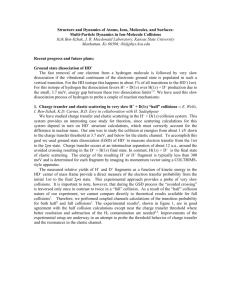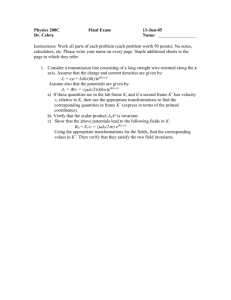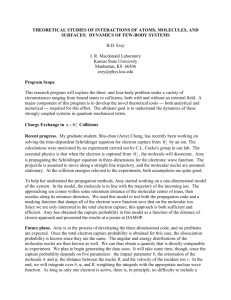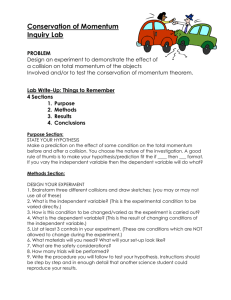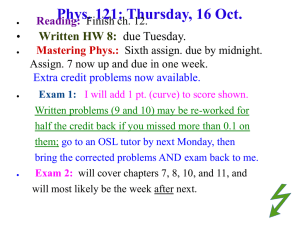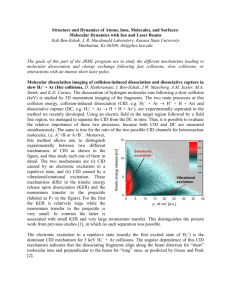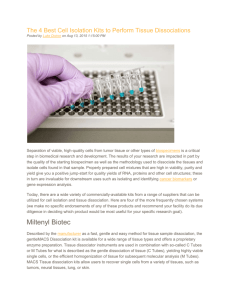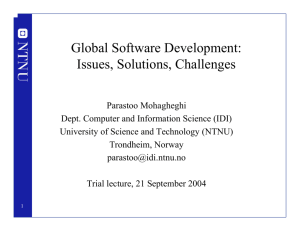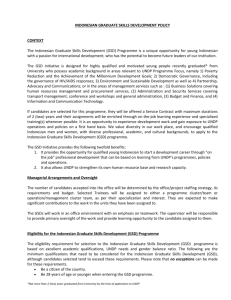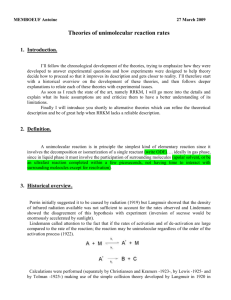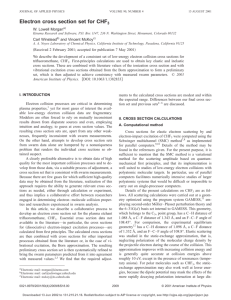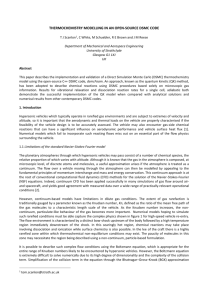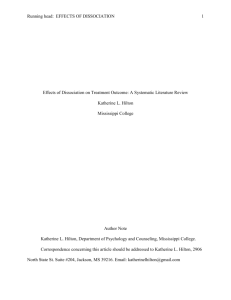Charge transfer and elastic scattering in very slow H+ + D(1s) “half
advertisement
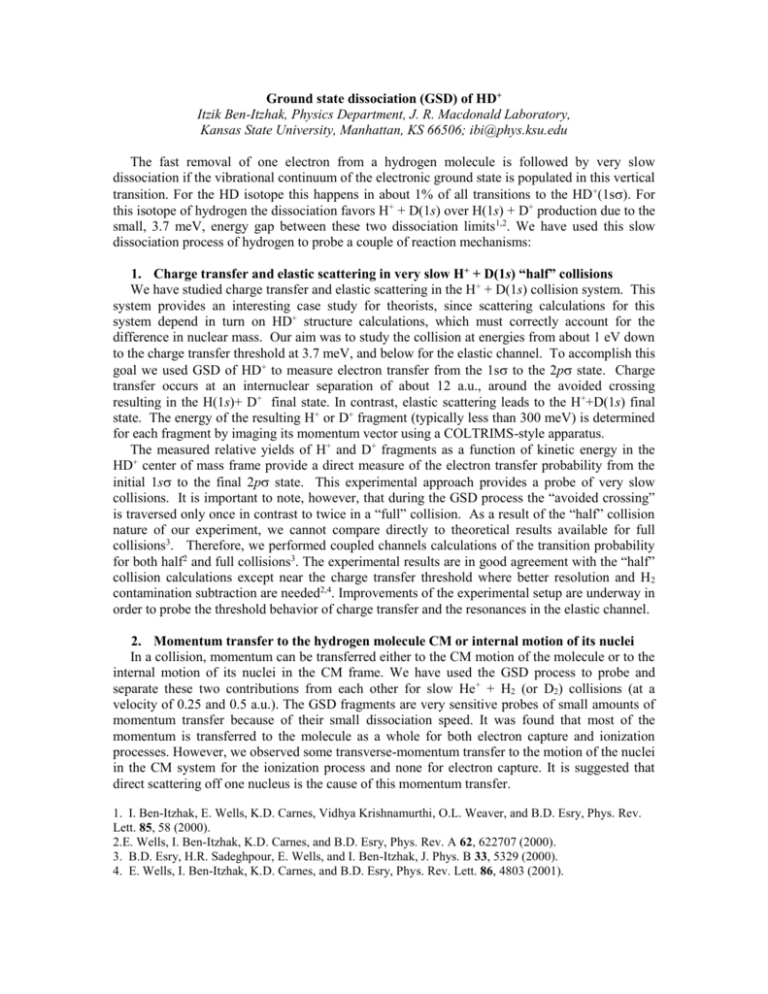
Ground state dissociation (GSD) of HD+ Itzik Ben-Itzhak, Physics Department, J. R. Macdonald Laboratory, Kansas State University, Manhattan, KS 66506; ibi@phys.ksu.edu The fast removal of one electron from a hydrogen molecule is followed by very slow dissociation if the vibrational continuum of the electronic ground state is populated in this vertical transition. For the HD isotope this happens in about 1% of all transitions to the HD+(1s). For this isotope of hydrogen the dissociation favors H+ + D(1s) over H(1s) + D+ production due to the small, 3.7 meV, energy gap between these two dissociation limits1,2. We have used this slow dissociation process of hydrogen to probe a couple of reaction mechanisms: 1. Charge transfer and elastic scattering in very slow H+ + D(1s) “half” collisions We have studied charge transfer and elastic scattering in the H+ + D(1s) collision system. This system provides an interesting case study for theorists, since scattering calculations for this system depend in turn on HD+ structure calculations, which must correctly account for the difference in nuclear mass. Our aim was to study the collision at energies from about 1 eV down to the charge transfer threshold at 3.7 meV, and below for the elastic channel. To accomplish this goal we used GSD of HD+ to measure electron transfer from the 1s to the 2p state. Charge transfer occurs at an internuclear separation of about 12 a.u., around the avoided crossing resulting in the H(1s)+ D+ final state. In contrast, elastic scattering leads to the H++D(1s) final state. The energy of the resulting H+ or D+ fragment (typically less than 300 meV) is determined for each fragment by imaging its momentum vector using a COLTRIMS-style apparatus. The measured relative yields of H+ and D+ fragments as a function of kinetic energy in the HD+ center of mass frame provide a direct measure of the electron transfer probability from the initial 1s to the final 2p state. This experimental approach provides a probe of very slow collisions. It is important to note, however, that during the GSD process the “avoided crossing” is traversed only once in contrast to twice in a “full” collision. As a result of the “half” collision nature of our experiment, we cannot compare directly to theoretical results available for full collisions3. Therefore, we performed coupled channels calculations of the transition probability for both half2 and full collisions3. The experimental results are in good agreement with the “half” collision calculations except near the charge transfer threshold where better resolution and H2 contamination subtraction are needed2,4. Improvements of the experimental setup are underway in order to probe the threshold behavior of charge transfer and the resonances in the elastic channel. 2. Momentum transfer to the hydrogen molecule CM or internal motion of its nuclei In a collision, momentum can be transferred either to the CM motion of the molecule or to the internal motion of its nuclei in the CM frame. We have used the GSD process to probe and separate these two contributions from each other for slow He+ + H2 (or D2) collisions (at a velocity of 0.25 and 0.5 a.u.). The GSD fragments are very sensitive probes of small amounts of momentum transfer because of their small dissociation speed. It was found that most of the momentum is transferred to the molecule as a whole for both electron capture and ionization processes. However, we observed some transverse-momentum transfer to the motion of the nuclei in the CM system for the ionization process and none for electron capture. It is suggested that direct scattering off one nucleus is the cause of this momentum transfer. 1. I. Ben-Itzhak, E. Wells, K.D. Carnes, Vidhya Krishnamurthi, O.L. Weaver, and B.D. Esry, Phys. Rev. Lett. 85, 58 (2000). 2.E. Wells, I. Ben-Itzhak, K.D. Carnes, and B.D. Esry, Phys. Rev. A 62, 622707 (2000). 3. B.D. Esry, H.R. Sadeghpour, E. Wells, and I. Ben-Itzhak, J. Phys. B 33, 5329 (2000). 4. E. Wells, I. Ben-Itzhak, K.D. Carnes, and B.D. Esry, Phys. Rev. Lett. 86, 4803 (2001).
